- Home
- Simon Winchester
The River at the Centre of the World Page 2
The River at the Centre of the World Read online
Page 2
It is difficult to think of any other world-class river that does such a thing. The Nile performs a flirtatious little wiggle through the north of Sudan. The Lena engages in a long, slow curve near Yakutsk. No one can pretend that the Volga is die-straight, nor the upper reaches of the Ganges, nor even the Rhine. The Rio Grande has a ‘great bend’, but like all these other big-river bends, it is by Chinese standards laughably small. Nothing looks like the Yangtze in northern Yunnan.
The sheer sharpness of the turn is what is so peculiarly dramatic about it – the sudden whirl-on-a-sixpence, turn-on-a dime, now-you-see-it-now-you-don't kind of a back flip, a riparian volte-face of epic dimensions. It is so dramatically obvious that it shows up on even the smallest-scale maps – whole-world projections usually manage to display it: it shows up as a strange notch, a kink, a curious indentation in the passage of great waters. It seems almost artificial, as though some great deity had once said to this river alone: proceed thus far in this direction, and no farther.
They call it the Great Bend at Shigu Town, and the fate of all China has long depended on it.
For the sake of what the Chinese call the Middle Kingdom, it is just as well that the river makes the turn it does. For had it not done so, had it been permitted to flow on southward – as a glance at any map will show that it probably wanted to do – then it is certain there would never have been an entity that westerners call the Yangtze. There would never have been a river deserving of the name that the Chinese use: Chang Jiang, the Long River, or just Jiang, The River.
Had there been no bend, and had the waters been allowed to flow on, they would have passed inexorably, inevitably and quite tragically away from and out of China. They would have left the continent for the Pacific not in the huge embayment known as the East China Sea, but via the almost insignificant and palm- and karst-ringed inlet called the Gulf of Tonkin. They would have spilled from the land not in the great delta on which has been built the great city of Shanghai, but on the much smaller stretch of mud and shingle where man created the very much lesser twin cities of Hanoi and Haiphong.
But for the presence of the singular geological oddity at Shigu, the Yangtze would have flowed on down into what is now the valley of the Red River. Instead of joining the sea two thousand miles later at Shanghai, this river would have dribbled lazily and insignificantly where the treacly mess of the Red River does today; it would have been, for most of its foreshortened length, a river – sister to the Mekong – in the country that is these days called Vietnam.
And China would be left without the Yangtze. The tributaries that today join the Yangtze would have flowed elsewhere, probably never joining forces with a great mother-stream and making an attempt at mightiness. There still would be some big rivers in China's heartland – the Yellow River would flow on unaffected, as would the Pearl. But had not the limestone massif intervened at Shigu, there would be nothing so unimaginably vast as the river that slices through the nation's heart today. A China without such an immense torrent at its heart is almost impossible to contemplate.
And yet, but for this one event, this single happenstance at Shigu, it could so easily have been so. A map will show the evidence: it is incontrovertible – the Yangtze would have ended its days in undistinguished fashion. Palm-oil jungles would take the place of container ports, muddy villages instead of pagodas and palaces, small market towns instead of giant industrial cities.
The fate and condition of a China made riverless by such an event would be profoundly and unutterably different from the complicated, ancient, infuriating and unashamedly powerful China with which the rest of the world has to deal today. Which is why I have always found it odd that the little town of Shigu in Yunnan is by and large undistinguished, unvisited and unknown – a place that, if famed at all, wins its repute not for its remarkable geology, but for a long-forgotten battle in which an invading Tibetan army loses to a local people whose menfolk carry falcons, keep parrots as household pets and leave all their major decisions to the women.
Fascinating though this all may be, what Shigu should by rights be known for is the miracle of geography that took place there, and that allowed China to become watered by and divided by and unified by the most important river in the world.
There is naturally a rational explanation for the Great Bend. The sudden diversion of the river at Shigu is simply the work of tectonics, a geomorphological occurrence called river-capture, and more specifically, the work of the terrifyingly powerful and ten-million-year-long event known as the Miocene Orogeny. In China, though, rational explanation often bows before legend, and it does so impressively at Shigu. Children are taught in school that what happened in Shigu is the work not so much of tectonics, but of an emperor who was called Yü the Great, lived four thousand years ago and was so exercised by the thought of this mighty stream pouring out of China, and of the leaching of good Chinese earth out into the realms of the Annamese barbarians, that he set a huge mountain down at Shigu and blocked the river at its exit.
The hill Da Yü chose for this purpose is called Yun Ling, Cloud Mountain. It exists today, looming over the little town. One early summer's day, as I was halfway through a long journey upriver, I took an afternoon to clamber up its flanks and to gaze down at the bend it creates. I was quite alone. Few others bother to walk the hill: it is not very high, it offers no spectacular sport, and from all aspects it looks ordinary enough, with little to single it out from the chaotic jumble of hills that make up this part of the Empire.
But some – especially if they have hold of a map that shows what this mountain does, how it shapes the course of the river that skids up against its impregnable northern slopes – could build a plausible and persuasive case for Cloud Mountain being quite the most important mountain in the world. Its very existence, they would argue, whether it was created by tectonics, or by a long-dead emperor, quite simply and profoundly allowed both the Yangtze and China to be. Cloud Mountain caused the Yangtze to exist; and given the central role that the Yangtze has for aeons played in the creation of China, one can say without risk of too strong contradiction that it caused China to exist as well.
The hill is pretty, with a deceptively soft aspect, and when I walked up it the lower slopes were covered with rhododendrons in bloom, and with camellias and stunted camphor trees. It has, all told, a gentle ordinariness about it. But like so much in China, this is a cunning deceit: for in the formidable story of the Long River, and in the only marginally less formidable story of the Middle Kingdom, Yunnan's modest-looking Cloud Mountain plays an unsung but most extraordinary part.
1
The Plan
‘Welcome!’ spoke the computer, with a tinny amiability that took the chill off the early morning. ‘You have mail!’
Duly, and robotlike, I then performed the slight mouse movements of finger and thumb that are all that is necessary these days to retrieve inbound electronic letters, and found in an instant the morning's mass of post. Most of it was routine, letters that I wouldn't bother with for an hour or so. But one did seem at first blush more intriguing – a note from someone I clearly did not know, someone who signed himself or herself with the rather unattractive sobriquet of ‘Lima Bean’. Peruvian? Surely not. I settled for the likelihood of an American correspondent, someone who was probably from the Middle West.
Everything that follows had its origins in this letter, leading as it did to a cascade of peculiar electronic coincidences. A journey that eventually passed thousands of miles into the remotest regions of a China far, far away from home first came about by way of a phenomenon that admirers of today's communications revolution would heartily applaud. Some might describe it, with appropriate grandiloquence, as a serendipitous moment, something that was grasped by happy chance while speeding down the information superhighway. Or as a digitally rendered equivalent of Once Upon a Time.
I had walked groggily into my study one cold morning in early winter, the first mug of Maxwell House in hand. I had switched on
the computer and looked to see if there was anything of interest for me. I hoped so: even in the digital universe one still wakes and hopes for letters. The tinny ‘Welcome’, the jaunty ‘You Have Mail’, caused as always that telltale quickening of the heart. ‘All long for mail,’ Auden wrote, ‘for who can bear to feel himself forgotten?’ So with a couple of keystrokes I told the computer to display the note from Mr or Mrs or Ms Lima Bean, and within seconds this uninvited stranger's words were tumbling onto the cathode tube before me.
They seemed to be asking for my advice about Hong Kong.
I could guess why. Some months before I had been asked to write up a list, on a sort of electronic self-portrait-cum-census-form, of what I considered at the time to be things that interested me. My response had been rather glib, and in retrospect not a little pretentious. Borrowing a line from Jorge Luis Borges, I said that I liked ‘hourglasses, maps, eighteenth-century typography, the roots of words, the taste of coffee, the prose of Robert Louis Stevenson – and Hong Kong’. This last I had added to the blind sage's list, and it was this last that prompted Lima Bean's brief letter.
‘Dear Sir,’ it said, or something to that effect, ‘I am about to go with my husband on our first-ever journey to Hong Kong. Since you say you are interested in the place, could you give us some hints on where to go, what to do, what to see… We are late-middle-aged, we think of ourselves as bright, and quite adventurous… We leave next week.’ The writer lived in northern Illinois. She confessed to rarely having ventured farther afield than Boston.
I replied instantly and almost unthinkingly, in the way that electronic mail tempts us to do. A swift tap on the Write a Reply button, then a few hastily chosen suggestions – the name of a temple near Sai Kung, my membership number at the China Club, my son's phone number on Lamma Island, the titles of a couple of good books – followed by a swift tap on Send Reply, and it was done. I returned to whatever work I was planning to do, and promptly forgot all about the exchange.
Two months later, on the afternoon of a day when I had returned from a trip abroad, a bulky package came in the mail, express, special delivery. It was postmarked Chicago. The return address was unfamiliar; but since it was unlikely that the Unabomber would have any interest in me, I unwrapped the parcel, though gingerly. It turned out to be a copy of the fifth edition of Sherman Lee's classic History of Far Eastern Art, expensively produced by an upmarket Fifth Avenue art house. The jacket was nicely culturally agnostic, balancing Japanese art and Chinese art with equal weight by showing a Momoyama period screen painting and a Sung dynasty handscroll side by side. It was very elegant: the perfect temptation, no doubt, for the impulsive buyer of this kind of hundred-dollar book.
I flipped through it for a while, stopping occasionally to look at colour plates of places I knew – temple gardens in Kyoto, a fresco at Borobudur, an elephantine sandstone Buddha in China's Shanxi province. Then a handwritten note fell out: it was from someone called Andrea, thanking me for the advice I had offered her and her husband all those weeks before.
They apologized for what seemed an unconscionable delay in expressing their gratitude, the note began. They had had an unforgettable time: the China Club was wonderful, the Austin Coates book* was unforgettable, my son's phone number was always busy. The enclosed was the very least way they could express their gratitude. Enjoy.
I was astonished. For what had taken me perhaps three minutes' thought – all this? I flipped through some more pages, pleased at the generosity of strangers – and then, quite suddenly, I stopped. For there before me was a reproduction, in black and white, and spread across the upper half of two pages, of what I knew to be a remarkable work of Chinese art. And more than that: I knew, the very moment I saw it, that this was a creation that, in some way or other, was going to change my life.
It was part of a picture by a Qing dynasty court painter named Wang Hui – part of it only, because the entire thing, if unrolled, would measure fifty-three feet from end to end. It was called Wen Li Chang Jiang – the Ten thousand li Yangtze.* It had been painted in about 1680. It was a fanciful ink and pastel realization of the entire course of the Yangtze River – which the Chinese generally called Chang Jiang, the Long River, or simply Jiang, The River.
Every mile of the stream, every town along its banks, every tributary, every rapid, every rockpool, everything from the mouth to the mountains was said to be there, in a more or less recognizable form. It was very beautiful, even in this fragment – the delicate brush strokes of more than three centuries before had produced pagodas, sailing junks, mountains, tree-covered rock pillars, reeds, fishermen, ancient city walls… Even had I not been grateful for the book, I was hugely glad to be seeing the picture. For – and herein lies the most important of the cascade of coincidences – the river of the painting was the river at the centre of my world.
For the very day that the book came so unexpectedly and so pleasingly in the mail was the day that I had returned from China, and, more specifically, from the river itself. And I had made the journey along the river purely and simply because I had been casting about trying to work out how best to write a book about it.
I had been fascinated by the Yangtze for many years at least since the mid-1980s, when I first went to live in Hong Kong. I remember vividly the first time I saw it. I had travelled out to the colony by train, all the way from Liverpool Street to Kow-loon, and although our various expresses had thundered over some fine rivers on the way (the Volga, the Ob, the Yenisei) and even though we had crossed the Huang He, the Yellow River, which I knew they called China's Sorrow because of the huge amount of heartland she ripped out to sea each year – despite all of these mighty crossings, nothing quite prepared me for the thundering roar of the bridge that took the train from Hanyang to Wuchang, across the vast brown winding-cloth that, to my unlettered English mind, was still known as the Yangtze Kiang.
One moment there were the lights of a city, and then came the rumble, rumble, rumble of the bridge girders and iron railway ties, and there was blackness below, and just nothing. It was like roaring on a railway in outer space. Once in a while a firefly of a light sped by underneath, or there was a line of little lights, some red, some green; and as my eyes grew accustomed to the gloom I could see the glint of rushing water, lit by the umbery sliver of soot-polluted moon. The dark and pinpricked river swept by below for minute after minute until suddenly, with a great relieving gush of silence, the girders dropped away, the rails became welded and seamless once again, and the lights of the steel mills of Wuchang turned sepia night into orange morning. We were past the Yangtze now: and though it was not apparent in the night we were in a different geography, in almost another country, and among quite another people.
Some geographers and writers like to think of the river as a sort of waistline, a silk ribbon that cinches China quite decidedly into two. Above the waist are the brain and the heart and soul of China, a land that is home to the tall, pale-skinned, wheat-eating, Mandarin-speaking, reclusive and conservative peoples who are the true heirs to their Middle Kingdom's five thousand years of uninterrupted history. Below the river-waist, on the other hand, are the country's muscles and sinews: the stocky, darker, more flamboyant, rice-eating peoples who speak in the furiously complicated coastal dialects, the men and women whose energies and acumen and cunning – and cooking – have spread the goods and words of China to the world beyond.
I could see nothing of this, of course, from my seat on the Shanghai Down Express. But I had been to Hong Kong before, and I had been to many of China's northern towns as well, and had been only too aware there was a certain facile truth about the geographers' theories: in summary, and superficially, one can readily observe that Northerners don't like rice, and they don't like Southerners, and the Yangtze is as convenient a line as any to draw between them.
And yet there was a paradox, too – in that the river that separates the nation also manages to unite it. The Yangtze divides the country in two by its sheer and barely
bridgeable width. But at the same time and on another level it also manages to weld the country into one, at least in part by virtue of its vast and barely imaginable length. All Chinese, whether they are from Hainan Island in the far south, or Mohe in Manchuria in the far north, or whether they live in Kashgar in remotest Turkestan, or on the Korean borderland near the lake at the summit of Mt Paektu – all Chinese have a feeling of ownership for and kinship with their Long River. It is all China's river – a sacred icon revered and respected by all.
All Chinese know they are fed by the Yangtze and flooded by the Yangtze; they know the river is their country's gateway and its major highway; they write poems about it and sing songs to it, they fight battles on its banks, they sign treaties on its shores, they draw water for fishing and washing and making power, they dump rubbish in it, they drown babies in it, they scatter ashes in it and pollute it with coal and sulphur and naphtha and the excretion and decay of every animal known, and of humans too. They respect it, fear it, welcome it, run from it, hate it and love it. More than any other river in the world – more even than the Nile, which also cradles an entire country and nurtures a civilization – the Yangtze is a mother-river. It is the symbolic heart of the country, and at the very centre, literally and figuratively and spiritually, of the country through which it so ponderously and so hugely flows.
If the Yangtze valley were to be a country it would be the second most populous in the world, after India. Out of all the people in the world, one in twelve lives in the river's watershed. There are almost 500 million people whose homes and workplaces are scattered along the miles of river cliffs and mud banks between the Tibetan Plateau and the East China Sea. And although two other rivers, the Nile and the Amazon, are marginally longer, their importance – social, economic, even cultural – is almost nothing by comparison.

 The Surgeon of Crowthorne
The Surgeon of Crowthorne Korea: A Walk Through the Land of Miracles
Korea: A Walk Through the Land of Miracles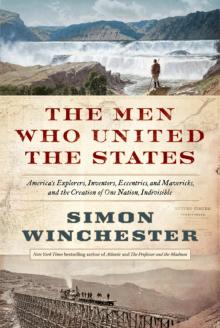 The Men Who United the States: America's Explorers
The Men Who United the States: America's Explorers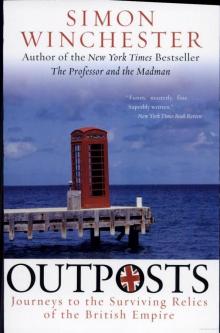 Outposts: Journeys to the Surviving Relics of the British Empire
Outposts: Journeys to the Surviving Relics of the British Empire Atlantic: Great Sea Battles, Heroic Discoveries, Titanic Storms
Atlantic: Great Sea Battles, Heroic Discoveries, Titanic Storms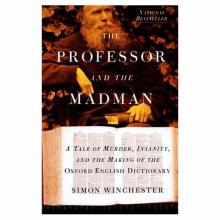 The Professor and the Madman: A Tale of Murder, Insanity
The Professor and the Madman: A Tale of Murder, Insanity A Crack in the Edge of the World
A Crack in the Edge of the World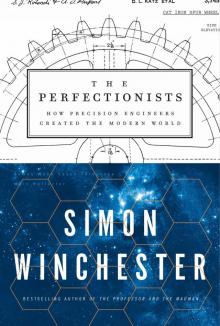 The Perfectionists: How Precision Engineers Created the Modern World
The Perfectionists: How Precision Engineers Created the Modern World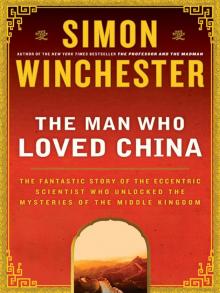 The Man Who Loved China: The Fantastic Story of the Eccentric Scientist
The Man Who Loved China: The Fantastic Story of the Eccentric Scientist The River at the Center of the World: A Journey Up the Yangtze
The River at the Center of the World: A Journey Up the Yangtze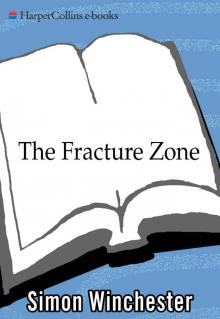 The Fracture Zone: My Return to the Balkans
The Fracture Zone: My Return to the Balkans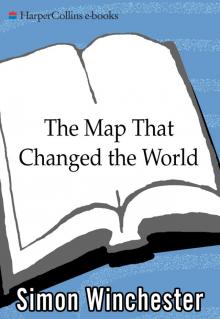 The Map That Changed the World
The Map That Changed the World Krakatoa: The Day the World Exploded
Krakatoa: The Day the World Exploded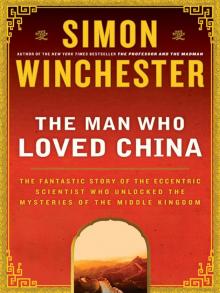 The Man Who Loved China
The Man Who Loved China The River at the Centre of the World
The River at the Centre of the World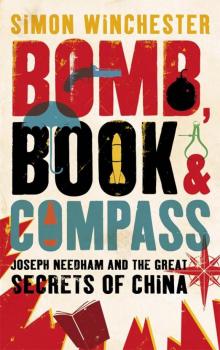 Bomb, Book and Compass
Bomb, Book and Compass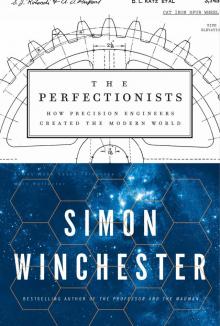 The Perfectionists
The Perfectionists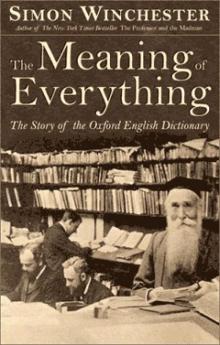 The Meaning of Everything
The Meaning of Everything Exactly
Exactly Atlantic
Atlantic Korea
Korea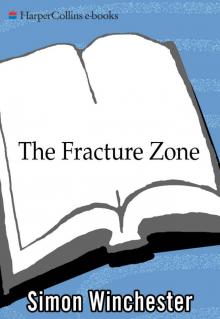 The Fracture Zone
The Fracture Zone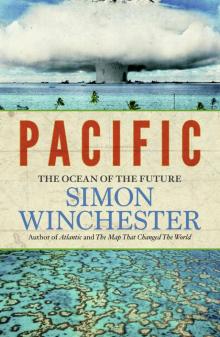 Pacific
Pacific Krakatoa
Krakatoa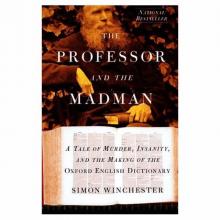 The Professor and the Madman
The Professor and the Madman Outposts
Outposts